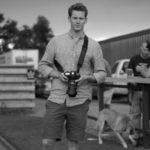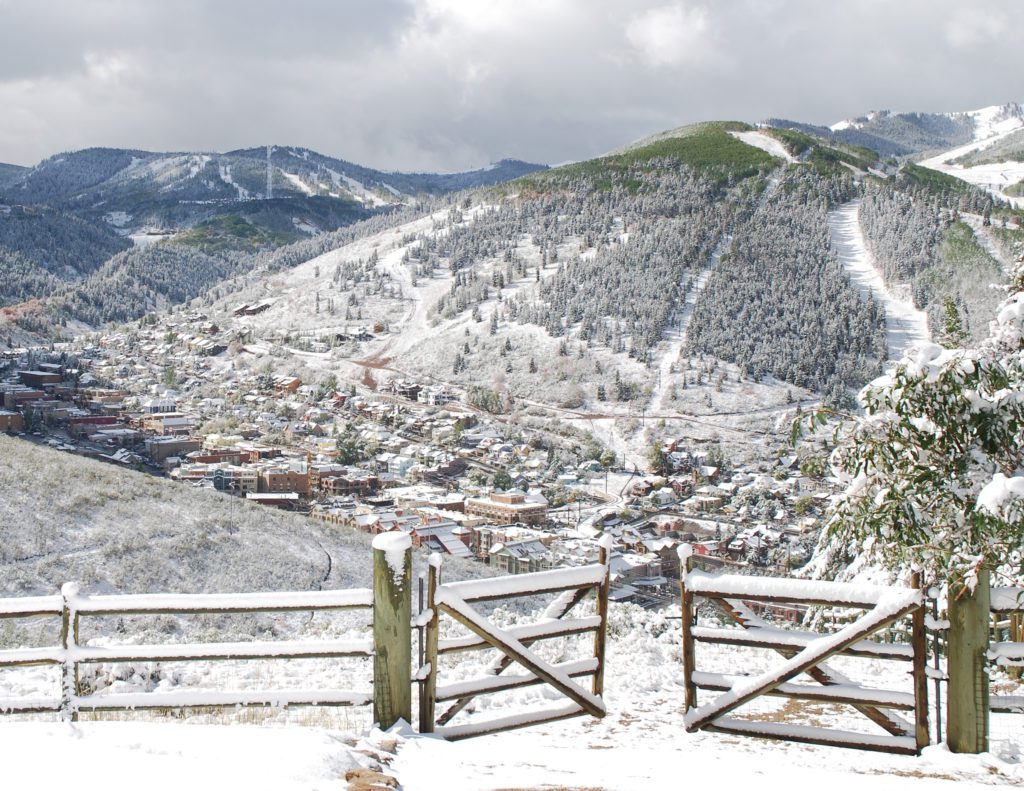
From the ICLEI USA Climate Action Series and written and conducted by Katlyn Manzer and Samuel Krasnobrod, graduates from the University of Colorado-Boulder, the below is based on a conversation with the Park City, UT’s Environmental Sustainability Manager, Luke Cartin. Throughout 2017, Manzer and Krasnobrod interned with ICLEI USA to conduct research on city-university collaboration, culminating in a “City-University Collaborations” webinar and website of case studies. Contact iclei-usa@iclei.org to explore city-university collaboration or climate action planning offerings for your community.
With a strong winter sports economy, Park City, Utah, welcomes more than 3 million visitors each year to enjoy their wealth of powdery precipitation, extensive system of hiking and biking trails, as well as their unique mountain town culture. Despite their comparatively low year-round population of 7,800 people, this active community has determination for addressing climate change locally. As reported by ICLEI USA in mid-2017 ago (see the article by here), Park City has set some of North America’s most ambitious climate goals. Read on to hear some of what Luke Cartin had to say about the City’s climate action progress during an interview held in January 2018.
Can you tell us a bit about the history of climate action planning in Park City, and what your city’s goals are now?
Luke Cartin: I’ve been in my role for just over a year and a half and my partner, Celia Peterson, has been in her role for about a year and a month, so we’re both relatively new to both the Park City Sustainability Department and our overall climate goals. That being said, we’re moving forward very quickly.
We have two timeline-based goals: By 2022, our city operations will be 100% renewable electricity and net zero carbon, and then those goals expand community-wide by 2032.
As quickly as we are moving now, there was actually a lapse in staffing in our department for almost a year; and the last time a community-wide carbon footprint had been done was 2009. Initially, there were a lot of holes to fill in, but with the timelines of our goals being so tight, we had to have some action pieces rolling as we filled in those holes.
Now we’ve got a bunch of programs running, of which the largest piece (to be up and running here in the next six weeks) is our communication platform. This will be focused around the climate action plan. We hope this platform will allow the plan to be more fluid, because we have a lot of projects rolling and a lot of updates to give to the community.
How does the City plan to achieve its net zero energy and 100% renewable energy goals?
LC: Our 2032 net zero goal is actually the most ambitious in North America. Roughly 28-29% of this goal will be met through the transportation sector with our electrified transit project already running and drastically increasing within the next year. We currently have a grid that is over 60% coal, but we have pieces underway from both our 2020 city operations plan and our community-wide plan to get us to 100% renewable energy.
An example of this is our carbon sink project. We are working on a lot of different pieces, but the biggest part that we are missing right now is better communications. That’s why we are focusing on that, and why it may have been harder to find some of the things we have going on, as the City’s web asset for sustainability was last updated in 2009. Everything was really out of date, so it was actually doing more harm than good. By relaunching our own sustainability website here in the next few months, we will be able to have that information updated.
Also in the next two months, we will be working on our Community-Wide Energy Action Plan, which will be supplemented by a bio-regional planning study that we have going on with Utah State University. All in all, we have got a lot of things going on.
Can you tell us more about the process of putting this plan together and how stakeholders were able to get involved in developing strategies and goals of the plan?
LC: There are multiple stakeholder groups that we’re working with, depending on whether it’s project-based or the overall goals. Our community set something called critical priorities as part of our overall goals. They’re set by our City Council and they are the programs that need to begin immediately, because if we don’t start working on these today, they are going to have large detrimental impacts on our community in the future.
There are three critical priorities in the community: affordable housing; transit and transportation; and energy and carbon. Energy and carbon have only been a critical priority for just under two years.
Our community also has a large tie to the open space around us. We’re unique from, say, Colorado in that we don’t have much federal land that meets up with city boundaries. So we’re making progress and doing great in the open space arena, but on the sustainability side, we’re lacking.
The community also has a large tie to our two ski resorts — 70% of our economy is based on winter revenues, so the community was engaged in setting very ambitious goals to start tackling this issue. We are already seeing the snow and rain line dance around. This winter it’s been brutally apparent, and we are already feeling those impacts.
The community wanted to set an ambitious goal, but a 2050 goal didn’t seem authentic. I would be 71 when that goal was completed, so that was too far out. The 2032 goal was actually set without science — it was set more with passion, which is actually good. It’s also 10 years after our franchise agreement with our utility.
Once that goal was set, the reality struck that we needed to have programs underway immediately. Some groups that we have engaged with in these programs are architects, contractors, developers, building operators, and a couple of other teams from the city and the private sector. These groups have helped build our expertise and choose the building performance standards to go after. Now we have one of the most ambitious internal building standards of any city with our net-zero building standards for our city facilities.
And you have an energy action plan and bio-regional planning process running simultaneously?
LC: The next program that we’re going to be rolling out is our Community-Wide Energy Action Plan. We are partnering with our utility, Rocky Mountain Power, on that. The initial meetings will be for general stakeholders, but then we’re going to actually divide those into different tracks.
We’ll have a small-business group, a residential group, an industrial users group, and the goal of those will be to maximize rebates and drive energy efficiency in our community. We’ll start with this broader stakeholder group, but then we would like to match the desired outcome with the stakeholders that we would get engaged.
Our bio-regional planning process actually has both City and County planning teams — building teams, transit and transportation teams, general outreach teams, and then also a water management team as well because water is sensitive here and could be a limiting factor on development.
Like I said, sometimes we have a broad approach, but a lot of times we’ll use a strategic approach for stakeholder engagement in order to help us accomplish our goals.
A special thank you to Luke Cartin of Park City for taking the time to be interviewed. If you have questions about this interview or want to receive resources for climate action planning, contact iclei-usa@iclei.org.


